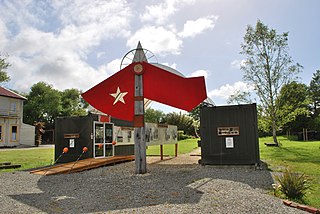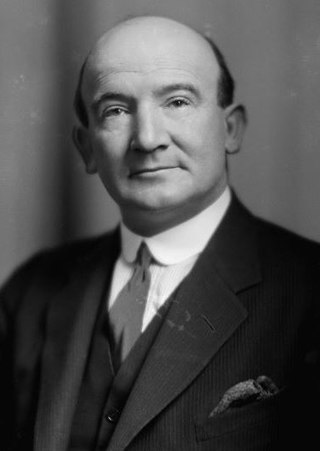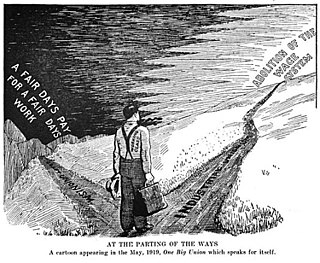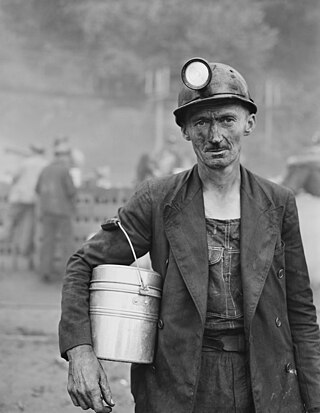
The United Mine Workers of America is a North American labor union best known for representing coal miners. Today, the Union also represents health care workers, truck drivers, manufacturing workers and public employees in the United States and Canada. Although its main focus has always been on workers and their rights, the UMW of today also advocates for better roads, schools, and universal health care. By 2014, coal mining had largely shifted to open pit mines in Wyoming, and there were only 60,000 active coal miners. The UMW was left with 35,000 members, of whom 20,000 were coal miners, chiefly in underground mines in Kentucky and West Virginia. However it was responsible for pensions and medical benefits for 40,000 retired miners, and for 50,000 spouses and dependents.
The Australian labour movement began in the early 19th century and since the late 19th century has included industrial and political wings. Trade unions in Australia may be organised on the basis of craft unionism, general unionism, or industrial unionism. Almost all unions in Australia are affiliated with the Australian Council of Trade Unions (ACTU), many of which have undergone a significant process of amalgamations, especially in the late 1980s and early 1990s. The leadership and membership of unions hold and have at other times held a wide range of political views, including socialist, democratic and right-wing views.

Blackball is a small town on the West Coast of the South Island of New Zealand, approximately 29 km from Greymouth. Elevation is approximately 100 metres.

The 1951 New Zealand waterfront dispute was the largest and most widespread industrial dispute in New Zealand history. Over the period, up to 20,000 workers went on strike in support of waterfront workers protesting against financial hardships and poor working conditions. Thousands more refused to handle "scab" goods. The dispute was sometimes referred to as the waterfront lockout or waterfront strike. It lasted 151 days, from 13 February to 15 July 1951. During the lockout, the Watersiders' Union was deregistered and its funds and records were seized, and 26 local watersiders' unions were set up in its place.
The 1913 Australian referendum was held on 31 May 1913. It contained six referendum questions and was held in conjunction with the 1913 federal election.

The Coal strike of 1902 was a strike by the United Mine Workers of America in the anthracite coalfields of eastern Pennsylvania. Miners struck for higher wages, shorter workdays, and the recognition of their union. The strike threatened to shut down the winter fuel supply to major American cities. At that time, residences were typically heated with anthracite or "hard" coal, which produces higher heat value and less smoke than "soft" or bituminous coal.

Patrick Charles Webb was a New Zealand trade unionist and politician.
The Miners' Federation of Great Britain (MFGB) was established after a meeting of local mining trade unions in Newport, Wales in 1888. The federation was formed to represent and co-ordinate the affairs of local and regional miners' unions in England, Scotland and Wales whose associations remained largely autonomous. At its peak, the federation represented nearly one million workers. It was reorganised into the National Union of Mineworkers in 1945.
The Progressive Miners of America was a coal miners' union organized in 1932 in Gillespie, Illinois. It was formed in response to a 1932 contract proposal negotiated by United Mine Workers President John L. Lewis, which reduced wages from a previous rate of $6.10 per day to $5.00 per day.

The Industrial Conciliation and Arbitration Act 1894 was a piece of industrial relations legislation passed by the Parliament of New Zealand in 1894. Enacted by the Liberal Government of New Zealand, it was the world's first compulsory system of state arbitration. It gave legal recognition to unions and enabled them to take disputes to a Conciliation Board, consisting of members elected by employers and workers.

The Industrial Workers of the World (IWW) is a union of wage workers which was formed in Chicago in 1905 by militant unionists and their supporters due to anger over the conservatism, philosophy, and craft-based structure of the American Federation of Labor (AFL). Throughout the early part of the 20th century, the philosophy and tactics of the IWW were frequently in direct conflict with those of the AFL concerning the best ways to organize workers, and how to best improve the society in which they toiled. The AFL had one guiding principle—"pure and simple trade unionism", often summarized with the slogan "a fair day's pay for a fair day's work." The IWW embraced two guiding principles, fighting like the AFL for better wages, hours, and conditions, but also promoting an eventual, permanent solution to the problems of strikes, injunctions, bull pens, and union scabbing.

Hubert Thomas "Tim" Armstrong was a New Zealand politician in the Labour Party.
The Court of Arbitration was the first court in New South Wales, Australia, which dealt exclusively with industrial relations disputes in the early twentieth century. Justice Lance Wright claims that it perhaps was the first court of its type in the world. The court was unique at that time as it was the first court of its type to deal with labour relations between employer and employees on a compulsory basis. Previous arbitration measures between employer and employee had been on a voluntary basis or had been based on the criminal justice system through the use of criminal penalties. The conventional economic model is that both employer and employee enjoy equal bargaining power to set wages and conditions. This asserts that both parties are able to agree on a fair market price for the cost of labour free from distortions. However, where employers or employees group together, these outcomes can be distorted particularly in “boom” or “bust” economic conditions. The purpose of the court was to change the manner in which employers and employees negotiated pay and conditions. It was an attempt to reduce the power imbalances between employer groups or employee unions that arose from using collective bargaining, and the resulting use of that market power to influence wages, and also to reduce the threat of lockout or strikes to achieve those ends.

The Great Strike refers to a near general strike that took place in New Zealand from October 1913 to mid-January 1914. It was the largest and most disruptive strike in New Zealand's history. At its height, it brought the economy of New Zealand almost to a halt. Between 14,000 and 16,000 workers went on strike, out of a population of just over one million.

People have worked as coal miners for centuries, but they became increasingly important during the Industrial Revolution when coal was burnt on a large scale to fuel stationary and locomotive engines and heat buildings. Owing to coal's strategic role as a primary fuel, coal miners have figured strongly in labor and political movements since that time.

Jumbunna Coal Mine NL v Victorian Coal Miners' Association is a landmark Australian judgment of the High Court. The matter related to the Commonwealth Government's power to make laws for the conciliation and arbitration of interstate industrial disputes under subsection 51(xxxv) of the Australian Constitution and the incidental power under subsection 51(xxxix), but in reaching a decision set principles on matters of statutory interpretation affecting the Constitution.

The Monmouthshire and South Wales Coal Owners' Association (MSWCOA) was an association of mine owners in South Wales that was active between 1873 and 1955. It fought wage increases, safety regulations, unionisation and other changes that would cut into profits. It managed to link miners wages, which were based on piece-work, to the price of coal. It was involved in various labour disputes, including a lengthy strike in 1926. The coal mines became unprofitable in the 1930s and were nationalised in 1947, making the association irrelevant.

R v Commonwealth Court of Conciliation and Arbitration; Ex parte BHP, was an early decision of the High Court of Australia concerning the jurisdiction of the Commonwealth Court of Conciliation and Arbitration in which the High Court controversially, granted prohibition against the Arbitration Court to prevent it from enforcing aspects of an industrial award. The High Court held that the Arbitration Court had gone beyond settling the dispute that had been submitted to it and in doing so had made a jurisdictional error.

The 1942 Betteshanger Miners' Strike took place in January 1942 at the Betteshanger colliery in Kent, England. The strike had its origins in a switch to a new coalface, No. 2. This face was much narrower and harder to work than the previous face and outputs were reduced. The miners proved unable to meet management production quotas and the mine owners refused to pay the previously agreed minimum daily wage, alleging deliberate slow working. An arbitrator called in to review the dispute ruled that the quotas were achievable. The miners disagreed and went on strike from 9 January.

Blackball Museum of Working Class History (Mahi Tupuna) is a museum in Blackball, a small town on the West Coast of New Zealand, that opened in May 2010. The collection celebrates the role of working people in creating the nation and its wealth.
















